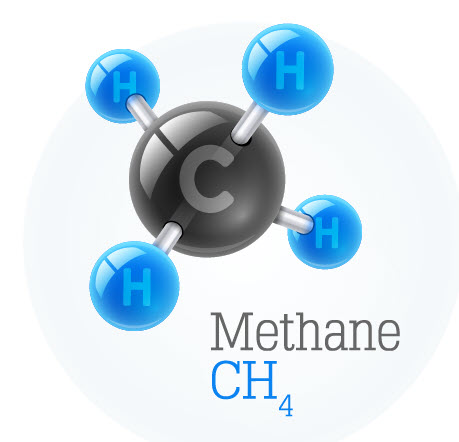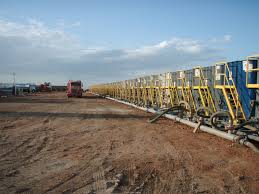COP28: Takeaways from Dubai
.jpg)
The UN’s Climate Change Conference, or “COP28” Summit was held from November 30 through December 13th in Dubai, UAE. The Conference consisted of 150 heads of State and Government and 85,000 participants representing countries, organizations, etc. This year’s summit focused on where the world is in relation to the goals initially outlined in the Paris Agreement (forget what that is? Refresher here: LINK). Spoiler alert – the world is nowhere near achieving the goals outlined, and the focus became how the countries involved can speed up their action on climate change mitigation through multiple avenues.
For the first time, notably, this conference dealt with if there would be:
- An agreement to end fossil fuel use (they ended up with a loophole heavy statement on a goal to “transition away”, more on that below)
- An inclusion for the first time of agricultural emissions in countries calculations and mitigation plans
- A focus on funding for smaller and poorer nations to begin their transitions to renewables.
- An agreement to triple renewables, and double the rate of energy efficiency advancements.
The sections below give a little more context and detail of the major event items, if you are curious:
“Transitioning Away from Fossil Fuels”
Much of the news from the summit centers around the “historic deal” to “transition away” from fossil fuels, after a contentious battle over whether the specific language should remain in the final agreement. This inclusion was hailed by many as a huge victory and step towards serious climate change mitigation. However, the final agreement also includes language on Carbon Capture and Utilization and Storage (CCUS), Transitional Fuels, and Carbon markets, which is seen by some as a glaring loophole that would implicitly allow continued fossil fuel use on the premise that when the technology can scale (it currently cannot) those emissions would then be able to be captured, sold, offset, etc.
As a refresher, CCUS captures carbon emissions from large scale sources like refineries, power plants, etc, compresses them, and injects them into reservoirs underground to mitigate the carbon’s impact on the atmosphere). The IEA projects that even at a best-case scenario level of scale through 2030, CCUS technology will simply not be able to capture more than a third of the emissions it would need to in order to reach net-zero emissions.
Methane Emissions: Agriculture in Focus
Highlighted at the summit was agreement on the need to significantly curb methane emissions, with a goal of reaching net-zero methane emissions by 2050. For the first time officially, the organization took a good hard look at agriculture. Agriculture is responsible for 30% of global emissions.
If you’re a Netflix afficionado, you may remember the charts and footage from “What the Health” or “Cowspiracy” that illustrate just how massive the climate impact is from Industrial Agriculture. Much like the protagonist in those documentaries, many wonder why emissions discussions, particularly regarding methane emissions, don’t often include (or center on) Agriculture. The COP28 summit did in fact involve discussion of its impact and resulted in the “Emirates Declaration on Sustainable Agriculture” which, among other things, commits consenting nations to include emissions from agriculture and farming in their national climate action plans for the first time.
Climate Change Loss & Damage Fund and Green Climate Fund
The last COP summit (COP27) set up (on paper) a loss and damage fund to help mitigate financial impacts to poorer nations from Climate related impacts. During the COP28 summit, a focus was put on filling the established fund. The last summit set the fund up, but without being fully funded it was argued that the fund was essentially a meaningless gesture on the part of wealthier nations. Over the course of the two weeks of talks the fund went up to $790 million – that sounds like a lot of money to us, but the estimates on what is needed runs from $100-400 Billion, so at the end of the day, it’s still at less than 1% of target funding.
During the summit, US Vice President Kamala Harris announced the US would pledge $3 billion to the Green Climate Fund, another established fund to help offset the cost to transition to green energy sources in developing nations. It is the understanding of the organization that poorer countries will need financial input from richer nations to facilitate their transition to green energy sources, and this fund is designed to be a source of funding for that.
Renewable Energy Capacity Tripling
The final deal struck at COP28 seeks for countries to triple their renewable energy capacity by 2030. A point of major contention at the summit (and in general) has been the category of so called “transition fuels” and what counts for them. Natural gas is the main sticking point on this – many member countries say natural gas should not count as a transitionary fuel because of its emissions, it’s a fossil fuel, etc – however, for poorer developing nations it is hard to argue that fuels like natural gas are not a huge step forward from existing systems, and it is also a lot more financially in reach than options like wind and solar, not to mention infinitely more scalable.
So?
Ultimately, the view of the summit’s conclusions among members, climate activist groups, and international groups is that the summit was successful and the language included is a step forward but does not go fast enough or far enough for their liking. As an editorial aside, it is difficult to imagine an agreement that did go far or fast enough for some of the groups, so given the disparate goals of all the member nations, coming away with any remotely firm statement on transition should be seen as a positive by most of the involved participants.


